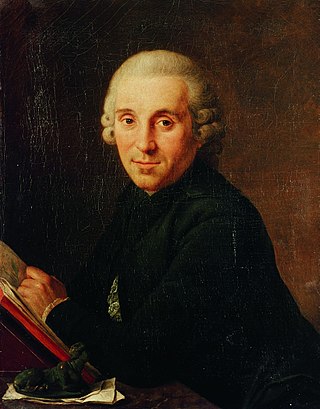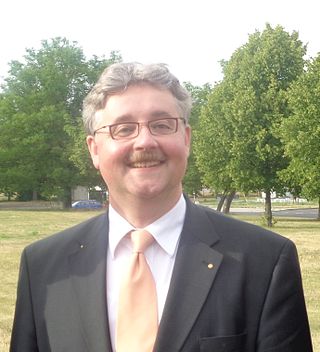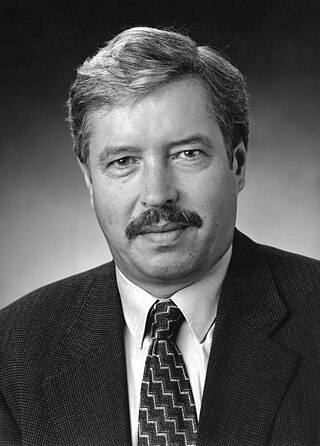
Paderborn Cathedral is the cathedral of the Catholic Archdiocese of Paderborn. It is located in the city centre of Paderborn, North Rhine-Westphalia, Germany. The cathedral is dedicated to Saint Mary, Saint Kilian and Saint Liborius. The official German name is Hoher Dom Ss. Maria, Liborius und Kilian.

Heinz Waaske was a German camera designer, notably father of the Rollei 35.

Peter Wust was a German existentialist philosopher.

Hermann Robert Richard Eugen Kasack was a German writer. He is best known for his novel Die Stadt hinter dem Strom. Kasack was a pioneer of using the medium broadcast for literature. He published radio plays also under the pen names Hermann Wilhelm and Hermann Merten.

Ferdinand Franz Wallraf was a German botanist, mathematician, theologian, art collector and Roman Catholic priest. His collection formed the founding nucleus of the Wallraf–Richartz Museum.
Lutz E. von Padberg is a German historian whose specialty is medieval history and in particular the Christianization of the Germanic peoples. He is an expert on Saint Boniface, having written biographies of the saint and studies of his veneration.
Hans Heinrich Schmid was a Swiss Protestant Reformed theologian, University Professor and University Rector.

Robert Wolfgang Schnell was a German writer.
Wolfgang Foerster was a German officer and military historian. His biography of General Ludwig Beck provided important source material for William Shirer’s seminal book, “The Rise and Fall of the Third Reich”.

Gerhard Zwerenz was a German writer and politician. From 1994 until 1998 he was a member of the Bundestag for the Party of Democratic Socialism (PDS).
Heinrich Johann Kampschulte was a German Roman Catholic priest, Catholic Centre Party politician and an historian.
Jens Westemeier is a German historian and author who specialises in military history and the history of the Nazi era. He has published several books on topics relating to the Waffen-SS and its personnel and commanders.
The Military History Working Group is a German professional association and research network formed in 1995 in Freiburg. It focuses on the interdisciplinary war studies and military history.

Karl-Rudolf Korte is a German political scientist and since 2002 professor at the University of Duisburg-Essen on Campus Duisburg. He appears regularly in national media as a guest for election analyses.
Wolfgang Martin Stroh is a German musicologist and Emeritus professor at the Carl von Ossietzky Universität Oldenburg.

Heinrich Bone was a German educator and hymnwriter. He wrote a reader for German studies which was used for higher education in Germany, Belgium, Luxembourg and Austria, until it was banned during the Kulturkampf. He published a hymnal, Cantate!, which was used by several Catholic dioceses and became a model for common hymnals. Some of his own hymns, including paraphrases of Latin hymns, are part of recent hymnals, both Catholic and Protestant, such as "Komm, Schöpfer Geist, kehr bei uns ein" as a paraphrase of the 9th-century hymn for Pentecost, Veni Creator Spiritus.

Matthias Stickler is a German historian.

The Idalion Temple inscriptions are six Phoenician inscriptions found by Robert Hamilton Lang in his excavations at the Temple of Idalium in 1869, whose work there had been inspired by the discovery of the Idalion Tablet in 1850. The most famous of these inscriptions is known as the Idalion bilingual. The Phoenician inscriptions are known as KAI 38-40 and CIS I 89-94.
Horst Irrgang was a German composer, conductor and musicologist.

Norbert Ryska is a German mathematician and museum director. Ryska worked from 1976 to 1992 as an employee of Nixdorf Computer AG in the R&D department. Until 1996 as managing director and project manager on behalf of the Nixdorf Foundations mainly responsible for the construction of the Heinz Nixdorf MuseumsForum (HNF). From 1996 to 2013, Ryska was the managing director for the museum and technology departments of the HNF.












